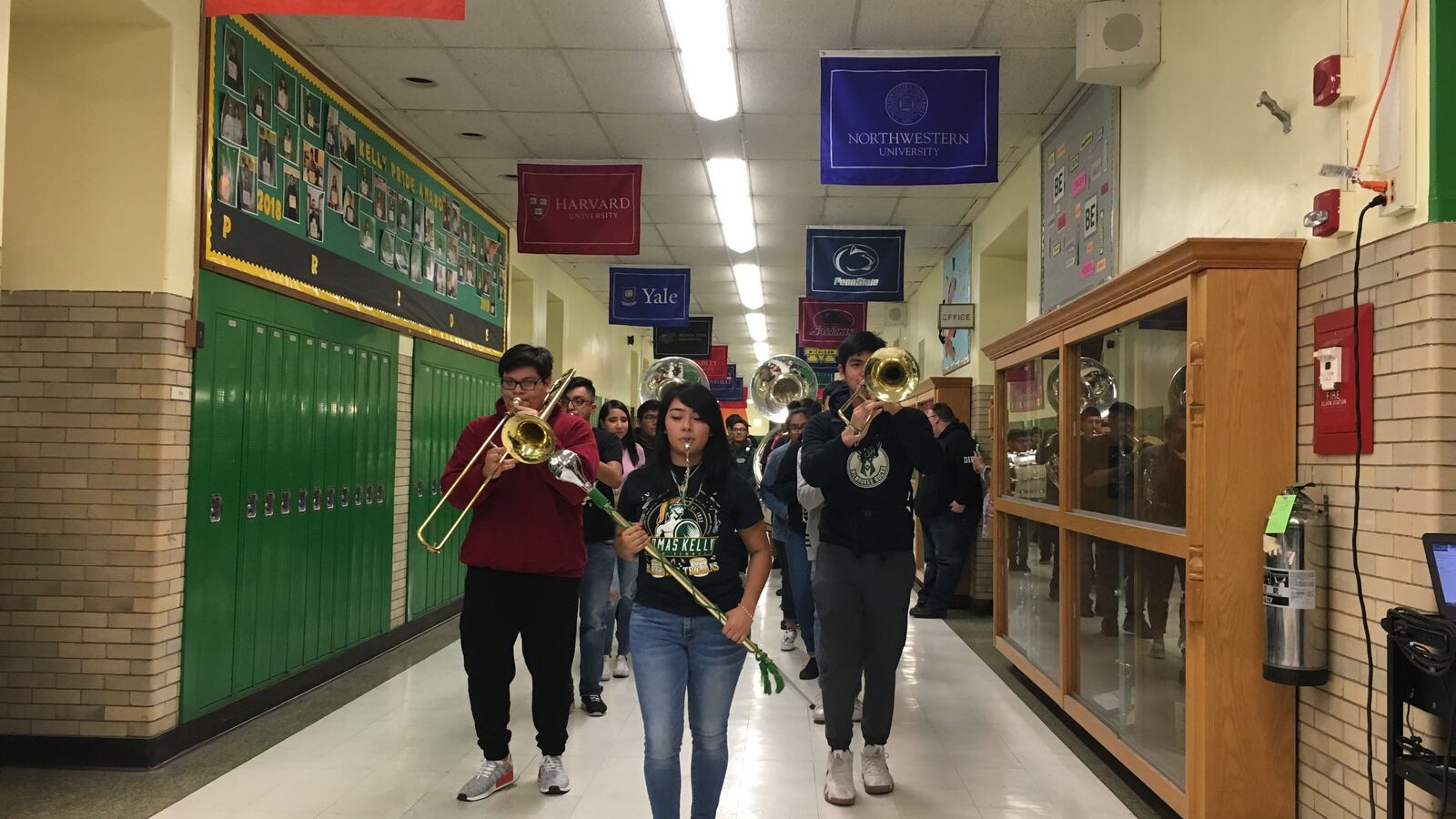To expand access to high-level courses and boost the profile of its open-enrollment high schools, Chicago will add five neighborhood schools and one charter to the prestigious Advanced Placement Capstone program.
“This is a great opportunity for our kids to continue to expand their college-[credit]-bearing classes,” said Raul Magdaleno, principal of Kelly High School, one of the high schools that will get the AP program beginning next school year.
Currently, only 15 Chicago high schools offer the AP Capstone program, and most of them are the city’s selective enrollment schools requiring students to pass a test to enter.
“If you look at the six schools that are establishing these programs, they are all open enrollment high schools. This speaks to the equity that we are trying to achieve,” district head Janice Jackson said at a press conference at Kelly.
“When students are exposed to advance courses early they are more likely to not only be prepared for college, but they are more likely to persist and complete college,” Jackson continued.
To earn an AP Capstone diploma, students have to take four advanced placement courses, score at least a 3 on four AP exams, and complete two yearlong AP courses, AP Seminar and AP Research courses, which aim to bolster students’ skills in research, writing, crafting evidence-based arguments, presenting and other areas critical to success in college and careers.
Besides Kelly in Brighton Park, other neighborhood schools that will offer the Capstone program include Back of the Yards College Prep High School in Back of the Yards, Hubbard High School in West Lawn, Lake View High School in Lake View, and Mather High School in Rogers Park. Charter school CICS Chicago Quest, near Old Town, also will offer the program.
Kelly administrators expect that the Capstone program will help make their school more appealing to students in the neighborhood. The school is ranked Level 2, in the middle of Chicago’s rating system, and is considered overcrowded. Enrollment was 1,918 in the fall of 2018 compared to 1,891 the year prior.
The school serves the Greater Stockyards Region which, according to the district’s school census released last year, has the city’s second-highest number of students attending high schools elsewhere. Only 41 percent of high school students stay in the region, compared with 55 percent districtwide. Almost 1,000 students from what the report labels the Greater Stockyards region go to selective enrollment schools outside the area.
“Over the years we found out that many of our kids come back to Kelly and say, ‘You didn’t prepare us for X, you didn’t prepare us for Y.’ We took their comments to heart,” said principal Magdaleno.
The announcement comes soon after the release of district data showing that nearly half of Chicago’s schools buildings are under-utilized, meaning they do not have enough students to adequately fill classrooms. However, with an exception of CICS Chicago Quest, the high schools receiving AP expansion all have enrollments above 1,000 students.
In Chicago, 22 percent of students took AP courses in 2015, according to federal civil rights data analyzed this fall by Chalkbeat and the investigative news site ProPublica. The data showed that white and Asian students, who make up 14 percent of the student body, have disproportionate access to AP classes, International Baccalaureate programs, and even arts and music education in some neighborhoods.
Expanding AP would help students like Alexis Hernandez, a senior at Kelly. Hernandez is studying for two AP tests on his own because his school doesn’t offer the program. “AP classes have allowed me to further my intellectual interests,” said Hernandez, who hopes to attend the University of Chicago.
Outgoing Mayor Rahm Emanuel has placed a priority on raising the number of students who take AP courses and boosting the percentage of course-takers who earn at least a passing grade of 3 on the exam. According to the district, since 2011 the number of students taking AP exams has increased by nearly 53 percent, or 8,350 students. The number of students scoring at least a 3 on the 5-point scale — the threshold for earning credit at many colleges — on at least one AP exam more than doubled, reaching 50 percent in 2017-18.
“This will attract more students who are looking for challenge and rigor and leaving high school with college credits,” Andrew Chipman, Kelly’s assistant principal, told Chalkbeat.


